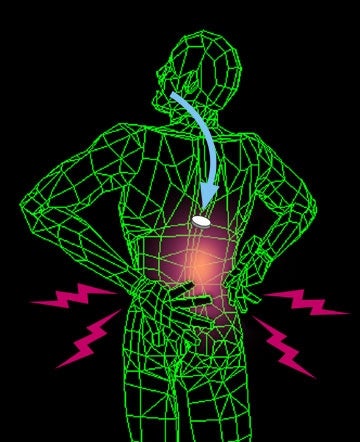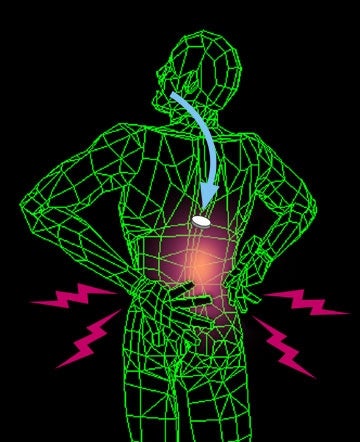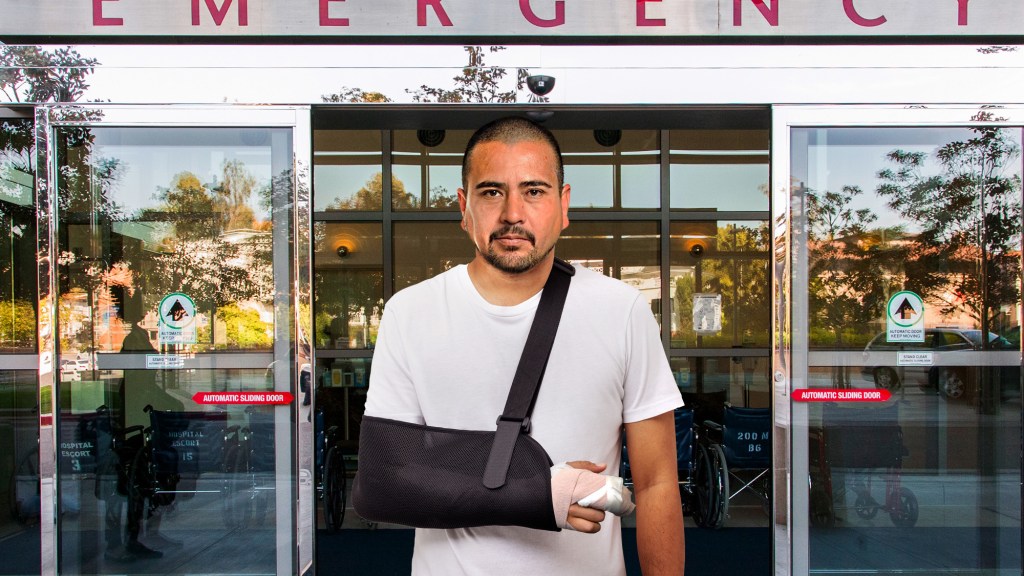DURHAM, NC—Modern science achieved a major breakthrough Tuesday, when researchers at Duke University’s prestigious Non-Prescription Research Laboratory used a high-tech, $55 million backache-imaging system to definitively prove that Doan’s pills really work.

According to scientists at the laboratory, the “BakMap880” holographic back-pain imaging system can literally “track” the pathway of an individual Doan’s pill through the human body, mapping its pain-relief dispersal pattern and depicting the backache itself as it is soothed and relieved.
“A view screen enables doctors and patients to literally ’see’ the relief of lower-back tension and muscular discomfort as it happens, in real-time display,” Duke research head Dr. Edwin Pleth said. “One can actually observe the pain-relief process taking place right before one’s very eyes. The benefits to science are staggering.”
An estimated 1.5 million Americans suffer from minor back pain flare-up daily. Yet, until now, none had access to up-to-the-minute data on back-pain medication effectiveness, information that is vital to the successful diagnosis and treatment of the condition.
Thanks to the revolutionary new process developed at Duke, however, backache sufferers will find it easier than ever to see just how effective Doan’s pills—the nation’s leading brand of non-prescription medication for problem back pain—actually are.
“I’d heard the claims before,” said longtime backache sufferer Hank Stepke of Grand Rapids, MI. “They said the pills provide fast, effective, temporary relief—even when compared to other leading brands that cost more. But I was skeptical. Those are just words.”
“However,” Stepke continued, “now that I’ve seen this informative, high-tech-looking scientific chart, I’m convinced. This is hard data, raw empirical evidence that cannot be denied.”
Minutes after taking two Doan’s pills, Stepke added, “My backache is gone! I could keep working all day long now! Thanks, Doan’s pills.” He then resumed moving furniture.
Back pain, long thought of as an invisible, slightly irritating physical discomfort, appears on the new device as clearly defined areas of red, pulsating glow. Flare-ups are depicted as lightning bolts radiating from the red area’s outer rim.
The new backache-imaging system also clearly illustrates the extra-strength pain-fighting action of Doan’s pills, depicting it as a gentle green light that emerges from the pill and envelops the back pain, totally neutralizing the suffering.
“The process of quick and effective pain relief is clearly visible to the naked eye,” Pleth said.
Four out of five doctors on the Duke research team agreed: the BakMap880 will revolutionize the way we look at non-debilitating, everyday lower back pain.
“The advances now possible in the field of tension-related dorsal discomfort diagnosis are virtually limitless,” Pleth said. “Of course, if back pain persists after repeated treatment, see your doctor.”
With the first-ever backache-imaging system finally a reality, the Duke team has already begun work on its next project: a computer-modeled, $70 million “cyberfoot” designed to demonstrate the way tough actin’ Tinactin covers fungi-infected areas and soothes the painful burning and itching of athlete’s foot.
“That one,” Pleth said, “may still be years away.”







